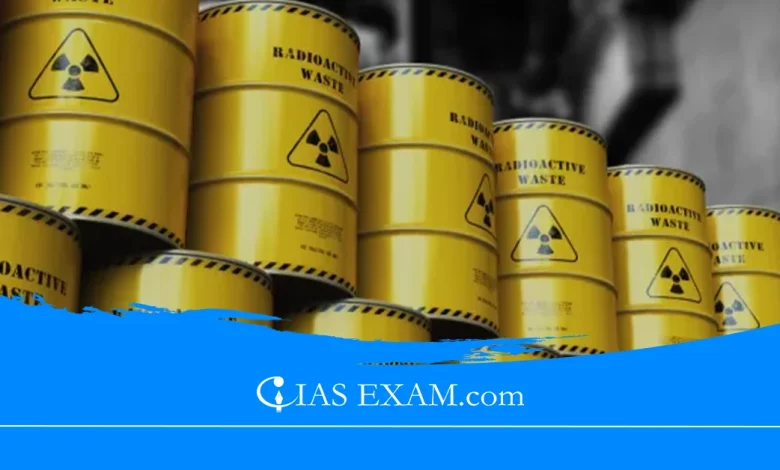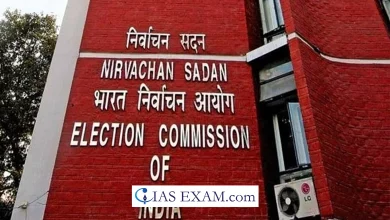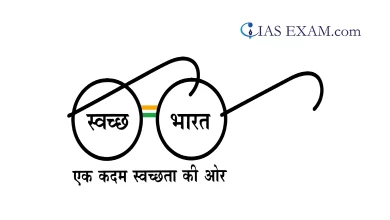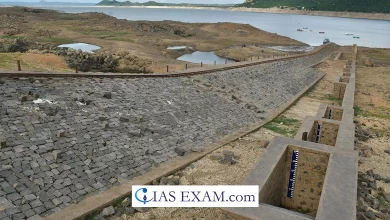Nuclear Waste Management in India
GS Paper 3 - Infrastructure, Nuclear Energy

Context
India recently marked a noteworthy milestone in its nuclear program with the successful loading of the core of the Prototype Fast Breeder Reactor (PFBR). This achievement underscores India’s commitment to harnessing nuclear energy to meet its growing energy demands and achieve energy independence.
However, alongside the advancements in nuclear technology, India is confronted with the intricate challenge of managing nuclear waste. As the nation strides towards bolstering its nuclear capabilities, it becomes imperative to delve into the nuances of nuclear waste management and explore sustainable solutions to mitigate its environmental and societal impacts.
What is Nuclear Waste?
- Nuclear waste comprises various radioactive materials generated during nuclear reactions, posing significant hazards to the environment and public health if not managed effectively.
- The complexity of nuclear waste arises from its diverse forms, including spent fuel, contaminated materials, and by-products from nuclear facilities.
- These materials possess varying degrees of radioactivity and require specialized handling and disposal mechanisms to prevent adverse consequences.
Techniques of Nuclear Waste Management
- Spent Fuel Storage: Spent fuel, initially stored underwater for cooling, is later transferred to dry casks for long-term storage. This process is critical due to the high radioactivity of spent fuel.
- Liquid Waste Treatment: Nuclear power plants have facilities to treat liquid waste, with some waste being discharged into the environment after treatment.
- Vitrification: Liquid high-level waste is vitrified to form a stable glass for long-term storage.
- Reprocessing: Reprocessing separates fissile material from non-fissile elements in spent fuel, allowing for the reuse of valuable materials. Ex.: India operates reprocessing plants in Trombay, Tarapur, and Kalpakkam.
- Geological Disposal: Some experts advocate for burying nuclear waste deep underground in stable geological formations. Waste is sealed in containers and buried in granite or clay formations, away from human activity.
Challenges and Concerns
Nuclear waste management presents a multifaceted array of challenges that require meticulous attention and strategic planning to mitigate effectively.
- One of the foremost challenges is the sheer diversity and complexity of nuclear waste streams generated from various stages of the nuclear fuel cycle, including spent fuel, radioactive by-products, and contaminated materials.
- Another significant challenge lies in the development and implementation of robust storage and disposal facilities capable of accommodating the vast quantities of nuclear waste generated over the operational lifespan of nuclear facilities.
- Additionally, the transportation of nuclear waste from generation sites to storage or disposal facilities poses logistical challenges and concerns regarding safety and security.
- Furthermore, public perception and stakeholder engagement present formidable challenges in nuclear waste management. Widespread misconceptions, fear, and apprehensions surrounding nuclear energy and its associated risks can impede the siting and approval of storage or disposal facilities, leading to resistance from local communities and regulatory hurdles.
- Moreover, the long-term management and stewardship of nuclear waste pose enduring challenges that extend beyond the operational lifespan of nuclear facilities.
Sustainable Solution to address the Challenges
Amidst the complexities surrounding nuclear waste management, India must prioritize the adoption of sustainable solutions to address this critical issue:
- Investing in research and development to enhance nuclear waste treatment technologies is imperative. Advanced techniques such as reprocessing and transmutation offer promising avenues for minimizing the volume and toxicity of nuclear waste, thereby mitigating its long-term impact.
- Fostering international cooperation and knowledge exchange can facilitate the adoption of best practices in nuclear waste management. Collaborative efforts with leading nuclear nations and international organizations can bolster India’s capabilities in handling nuclear waste.
- Promoting transparency and accountability in nuclear waste management is essential to build public trust and confidence. Robust regulatory frameworks and mechanisms for monitoring and oversight are crucial to ensure compliance with safety protocols.
Conclusion
As India embarks on a trajectory of energy expansion through its nuclear program, the effective management of nuclear waste emerges as a critical imperative. While the loading of the PFBR core signifies a milestone in India’s nuclear journey, it also underscores the pressing need to address the challenges associated with nuclear waste management. By adopting sustainable solutions, fostering international collaboration, and enhancing regulatory oversight, India can navigate the complexities of nuclear waste management while advancing its energy goals in a safe, responsible, and environmentally conscious manner.
SOURCE: The Hindu





.png)



